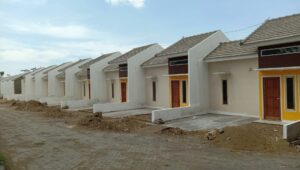Aashiana Housing Project (AHP)
Introduction:
Aashiana Housing Project (AHP) is the byproduct of the capitalist economic system especially in the industrialized or developed economies is the widening of gap between the rich and poor. A small percentage is becoming increasingly richer, while larger numbers are falling below the poverty line. This widening of gap between the rich and marginalized has compelled political economists to redefine the concept of Welfare State (which initially comprised of tax collection and income redistribution); it is now more inclusive and encompasses the comparative wellbeing and standard of living of the existing population in terms of a basket of noncash benefits such as education, health, capacity building of unemployed youth and housing facilities.

Most developing states are unable to escape the forces of globalization and thus have free market or capitalist economic systems, therefore the scale and importance of the demand for “housing” for the poor and marginalized is on the rise in these countries.
Lahore Development Authority: Colonial Laws, New Challenges:
The urban population as percentage of total population in Pakistan is also increasing rapidly. According to 1998 census, 31.3% of the total population lived in urban areas whereas by 2010-2011 it had increased to 37% and will be more than 50% of the total population by the end of 2015 with an average growth rate of 2.97%3. Lahore is among the densely populated metropolitan cities of Pakistan. It is the second biggest city of Pakistan with population of around 8.63 million4 (Khaliq-Uz_Zaman & Arif A Baloch 2011) with an annual growth rate of 2.83%5 and also holds the status of provincial capital of Punjab with urban population of around 13% (1998 Census) of the total urban population of Pakistan6. Lahore has witnessed huge expansion in terms of housing infrastructure development. Lahore Development Authority (LDA) is the principal public body involved in the supply of residential plots in Lahore.
The Lahore Cantonment Board and Defense Housing Authority are also involved in housing and land development in the city. the LDA has framed certain regulations under which it grants approval to housing projects of the private sector in two stages. It first grants technical approval to a private sector sponsored housing scheme when its layout plan is submitted and found up to the required standards. Final approval is granted when the services design of the scheme is submitted and found in conformity with LDA’s standards. Mr. Shahbaz Sharif, Chief Minister of Punjab announced the Ashiana Housing Project, ostensibly for the low income and marginalized groups of Lahore in the last quarter of 2010.
Rationale & Policy Choice of Aashiana Housing Project (AHP):
Mr. Shahbaz Sharif, Chief Minister of Punjab announced the Ashiana Housing Project, ostensibly for the low income and marginalized groups of Lahore in the last quarter of 2010. However, the selection of the site, circumstances and motives around the scheme remain shrouded in mystery and have evoked questions about the financing of the project. Aashiana Housing Scheme is a project of Punjab Land Development Company (PLDC) in collaboration with the Bank of Punjab (BOP) which will be providing financing facility to successful applicants. MOU was signed by Bank of Punjab and Punjab Land Development Company on October 12, 2011 to provide loan to allottees of AHP.
Assessment and Evaluation of the Aashiana Housing Project (AHP) Scheme:
In critically evaluating the merits of the Aashiana Housing Project (AHP) according to prevalent housing policy debates, we consider the current Punjab Government’s intervention into the housing market as serious because most economists argue for less government intervention in the housing sector as compared to other groups of experts. Most economists have qualified faith in the efficiency of markets and argue for government intervention to oil the wheels of market mechanism.
Conclusion:
The Punjab Government has limited resources to combat the monstrous problem of housing in the province due to several reasons. Firstly, its financial constraints should lead to prudence and caution rather than risky housing schemes which could burden it with excessive overheads and a failure to collect revenues. Secondly, due to a variety of reasons, the gap between housing supply and demand is constantly widening. Thus while the Aashiana Housing Project will consume scarce provincial resources, it will not have any impact on the gigantic scale of the problem in the province.
